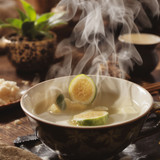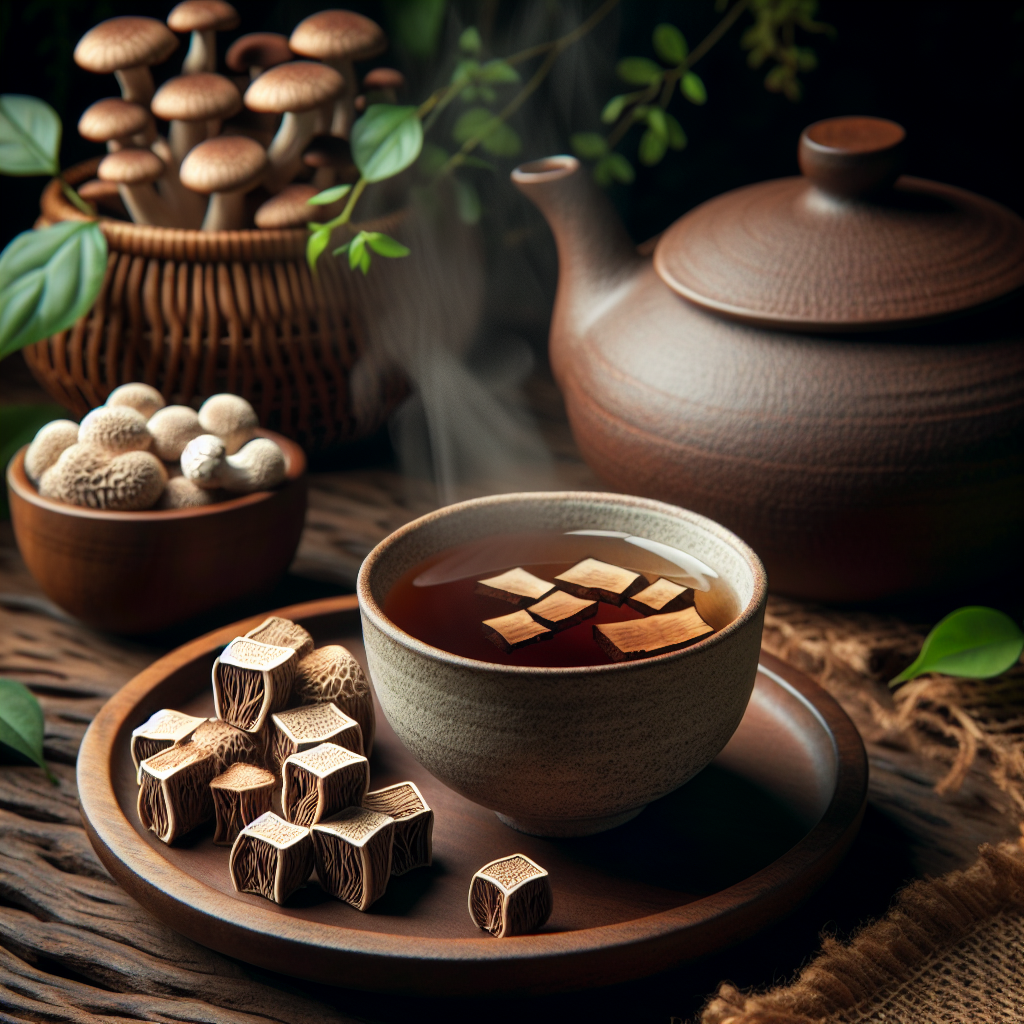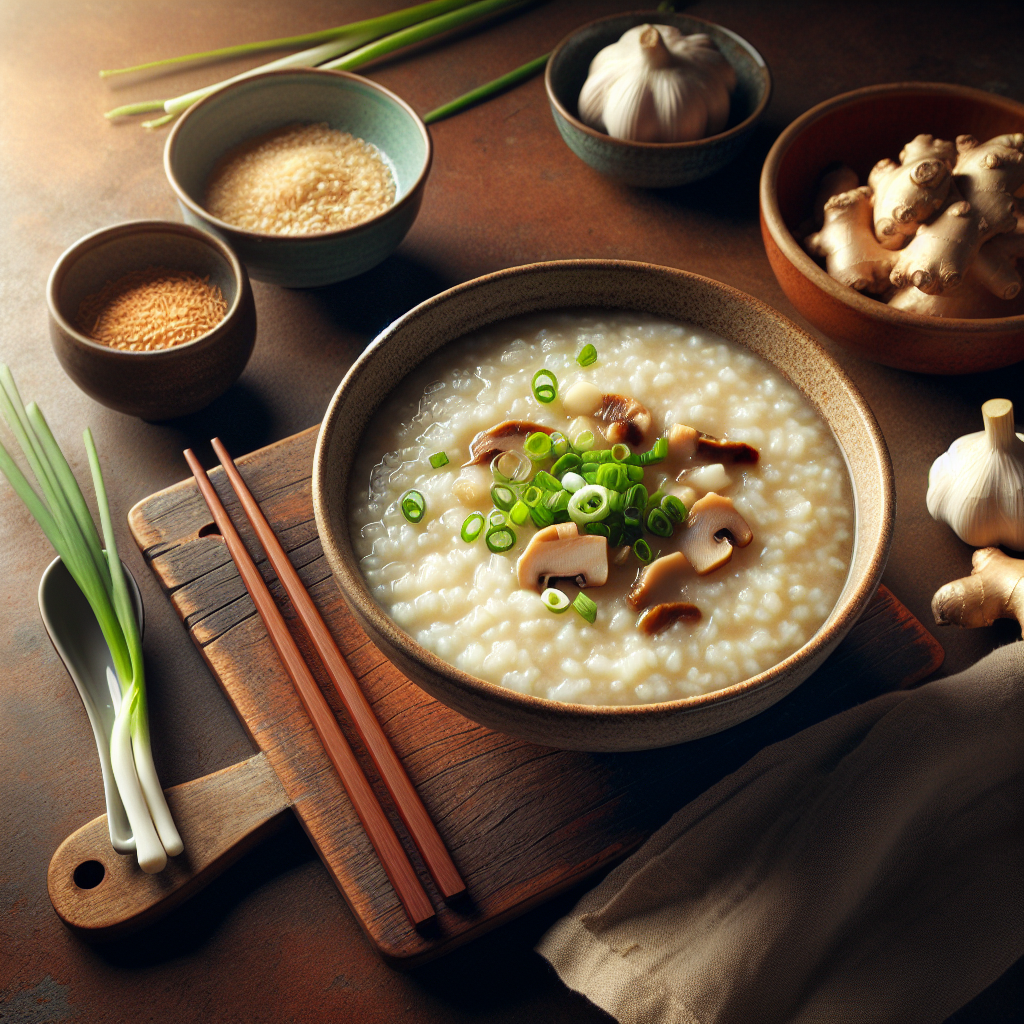

Starwest Botanicals
Organic White Tea Bags
White Tea Bags vs. Green Tea: Why They’re Different White tea and green tea come from the same plant—Camellia sinensis—but they’re made differently. That difference in processing is why white tea...
Poria—also called Hoelen, Tuckahoe, Indian Bread, Fu Shen, Yun Ling, China Root, Sclerotium of Tuckahoe, and Khumbi—is the neutral, food-like sclerotium used in TCM for gentle fluid balance, digestive ease, and calm clarity. It’s simple to use daily in teas, congee, or soups.
Last updated: September 9, 2025
Author: 1st Chinese Herbs Editorial Team (reviewed by our herbal education staff)
 Quick Facts Of Fu Ling Pi
Quick Facts Of Fu Ling PiCommon Names: Poria, Poria Cocos Fungus, Hoelen, Tuckahoe, Indian Bread, Fu Shen, Yun Ling, China Root, Sclerotium of Tuckahoe, Khumbi
Botanical Name: Poria Cocos Sclerotium (modern taxonomy: Wolfiporia extensa sclerotium)
Chinese / Pin Yin Name: Fu Ling Pi (peel form; see “Poria Parts” below)
TCM Category: Drain Dampness
Taste & Nature: Sweet, bland, neutral
Meridians (traditional): Spleen, Heart, Kidney (often Lung noted)
Common Forms: Main body (Fu Ling), peel (Fu Ling Pi), Fu Shen (with embedded pine root); cubes/slices, powder, capsules, granules
Typical Daily Amounts (educational): 3–6 g tea; 1–3 g powder; per-label capsules/granules
Poria is the compact, potato-like sclerotium formed around pine roots. In kitchens and clinics, it’s valued as a mild, food-like daily herb that blends easily into teas, congee, and soups. Because it’s neutral and gentle, it’s a staple in traditional formulas aimed at draining dampness, supporting digestion, and—especially in its Fu Shen form—calming the spirit.
Poria cocos is the classic name you’ll see on older labels; modern texts often use Wolfiporia extensa (same traditional material).
Poria Parts:
Fu Ling — the main white sclerotium (general, daily use).
Fu Ling Pi — the outer peel (traditionally emphasizes promoting urination/surface fluids).
Fu Shen — poria with a pine-root core (traditionally chosen when gentle shen-calming is desired).
Drains Dampness, Promotes Urination — for that “heavy,” puffy, or water-logged feeling (traditional language).
Supports the Spleen/Stomach — neutral, bland, easy to digest.
Calms the Spirit — Fu Shen form is traditionally selected when gentle calm and clarity are desired.
Fluid balance & lightness as part of everyday wellness routines.
Digestive comfort in soups, teas, and congee.
Daytime calm without stimulation (especially with Fu Shen)
Correct Part on Label — Fu Ling (main body), Fu Ling Pi (peel), or Fu Shen (with pine root).
Cut & Cleanliness — uniform cubes/slices; light color; low moisture; no off odors.
Testing & Transparency — COA (identity, heavy metals, microbes) available; batch/lot tracking.
Manufacturing & Origin — GMP facility, country of origin disclosed, consistent specs for powders/capsules.
Packaging & Storage — moisture-barrier bags/jars;
| Form | Typical Daily Amount | How to Prepare | When to Use | Notes |
|---|---|---|---|---|
| Poria cubes/slices (Fu Ling) | 3–6 g | Simmer 15–20 min; strain | Morning or midday | Neutral, mild |
| Fu Ling Pi (peel) | 3–6 g | Simmer 10–15 min; strain | Shorter courses | Traditionally for surface fluids |
| Fu Shen (with pine root) | 3–6 g | Simmer 15–20 min | Daytime | Traditionally for gentle calm |
| Powder | 1–3 g | Stir into warm water or broth | Any time | Easy daily use |
| Capsules/Granules | Per label | With water | Any time | Convenience |
General educational guidance only; not a substitute for medical advice.
Tea/Decoction: Simmer the cut herb gently; strain and sip warm.
Powder: Blend 1–3 g into broths or warm water; neutral flavor.
Culinary: Add cubes to congee (rice porridge) or light soups for a food-like daily routine.
Pairings: Coix seed (Yi Yi Ren), ginger, and jujube are popular companions.
Yield: 1 cup (240–300 ml) Time: 20 minutes
Ingredients
5 g Poria cubes
1–2 slices fresh ginger
1 jujube (optional), sliced
10 oz water (≈300 ml)
Directions
Add Poria, ginger, and jujube to a small pot with the water.
Bring to a gentle simmer; cook 15–20 minutes.
Strain into a mug and sip warm.
Tips
Mild flavor—add a squeeze of lemon or a splash of honey if desired.
For a stronger brew, use 7–8 g Poria or simmer a few minutes longer.
 B) Poria Congee (Meal-Prep Friendly)
B) Poria Congee (Meal-Prep Friendly)Yield: 2 servings Time: 40–50 minutes
Ingredients
30 g rice (about ¼ cup)
6 g Poria cubes
1–2 slices fresh ginger
2 cups water (≈480 ml)
Pinch of salt or sliced scallion, to finish
Directions
Combine rice, Poria, ginger, and water in a pot.
Bring to a boil, then reduce to low and simmer, stirring occasionally, until soft and porridge-like (≈40–50 minutes).
Remove ginger slices, season lightly with salt, and top with scallion.
Tips
For creamier congee, add ½ cup (120 ml) more water and cook a little longer.
Make ahead: cool, refrigerate up to 3 days; reheat with a splash of water.
| Feature / Focus | Fu Ling (Poria) | Fu Ling Pi (Peel) | Fu Shen (with pine root) |
|---|---|---|---|
| Traditional Emphasis | Daily gentle damp-draining | Promote urination/surface fluids | Gentle shen-calming + drain damp |
| Nature (TCM) | Neutral, bland | Neutral, bland | Neutral, gentle |
| Typical Use | Tea, soups, congee | Shorter courses, tea | Daytime calm blends, tea |
| Pairs Well With | Coix seed, jujube | Ginger, aged tangerine peel (Chen Pi) | Lotus seed, jujube |
| Herb (Traditional) | When It’s Chosen (Traditional Focus) |
|---|---|
| Poria (Fu Ling) | Neutral daily support for dampness/digestion |
| Coix seed (Yi Yi Ren) | Common pairing for dampness with grain-like ease |
| Alisma (Ze Xie) | Water-movement partner in classic formulas |
| Polyporus (Zhu Ling) | Traditionally stronger water-draining |
(Educational overview; consult a qualified practitioner for personalized guidance.)
Keep dry, cool, and away from light; reseal quickly after opening.
Powders benefit from a desiccant; avoid steamy kitchens.
Use within the best-by window for optimal flavor and aroma.
 Research & Classics
Research & Classics Poria is a classic materia-medica ingredient in East Asian traditions for dampness, digestive harmony, and—via Fu Shen—calm spirit themes.
Modern texts and reviews discuss Poria’s neutral, food-like profile and its common use in daily soups/porridges.
Evidence summaries remain conservative; consumers choose Poria mainly for gentle, routine support.
(Educational context only; results vary by individual.)
Q: Which Poria part should I buy—Fu Ling, Fu Ling Pi, or Fu Shen?
A: Choose based on goal: Fu Ling (general/daily), Fu Ling Pi (surface fluids), Fu Shen (gentle calm). Your label should name the exact part.
Q: How does Poria taste and how often can I drink it?
A: Mild, slightly sweet/bland. Many people enjoy a cup daily as tea or add cubes to congee/soups.
Q: Can I combine Poria with Coix seed or Jujube?
A: Yes—those are classic companions for gentle, food-like routines.
Q: Who should be cautious?
A: Very dry constitutions or those with frequent urination may prefer modest amounts. If you are pregnant, nursing, on medication, or managing a condition, consult a qualified professional.
Q: Is this medical advice?
A: No—this content is educational and not intended to diagnose, treat, cure, or prevent any disease.
Lab-tested | COA available | GMP manufacturing | Origin disclosed
Correct part named (Fu Ling / Fu Ling Pi / Fu Shen)
Clean cut quality and moisture-safe packaging
Ready for a gentle daily routine?
Explore our lab-tested Poria—Fu Ling, Fu Ling Pi, and Fu Shen—in cubes, peel, and convenient powders/capsules. Transparent COA. GMP quality.
Shop Poria → See All Forms Below
This page is for educational purposes only. It is not intended to diagnose, treat, cure, or prevent any disease. Always consult your healthcare professional before starting new herbs or supplements.
About 1st Chinese Herbs
Since 1994, we’ve provided carefully sourced, lab-tested herbs with consumer education that’s DSHEA-compliant and easy to use.
Editorial Policy
Our education team reviews pages for accuracy, clarity, compliance, and consumer usefulness. We update content regularly to reflect evolving standards.
References
Fu Ling Pi–specific (peel) evidence
Diuretic activity (fraction study, rats): The epidermis (“Fu-Ling-Pi”) ethanol extract showed notable diuretic effects; petroleum ether/EtOAc/n-butanol fractions were evaluated vs. controls. PubMed
Diuretic activity (ethanol vs. water extract): Ethanol extract of the epidermis was diuretic in vivo, while aqueous extract was not, helping explain traditional preparation choices. PubMed
Urinary metabonomics (peel): Metabolomic profiling of Fu Ling Pi supports its traditional diuretic use and explores potential pathways tied to edema/urination. PubMed
Comprehensive pharmacology review (triterpenoids, effects incl. diuretic/sedative): Summarizes chemistry and activities (incl. diuretic traditions). PubMed
Pachymic acid (lanostane triterpenoid) — therapeutic profile: Modern review of pachymic acid (a signature Poria compound). PMC
Polysaccharides overview (PCPs): 2024 review covering extraction, structure, and applications of Poria cocos polysaccharides. PMC